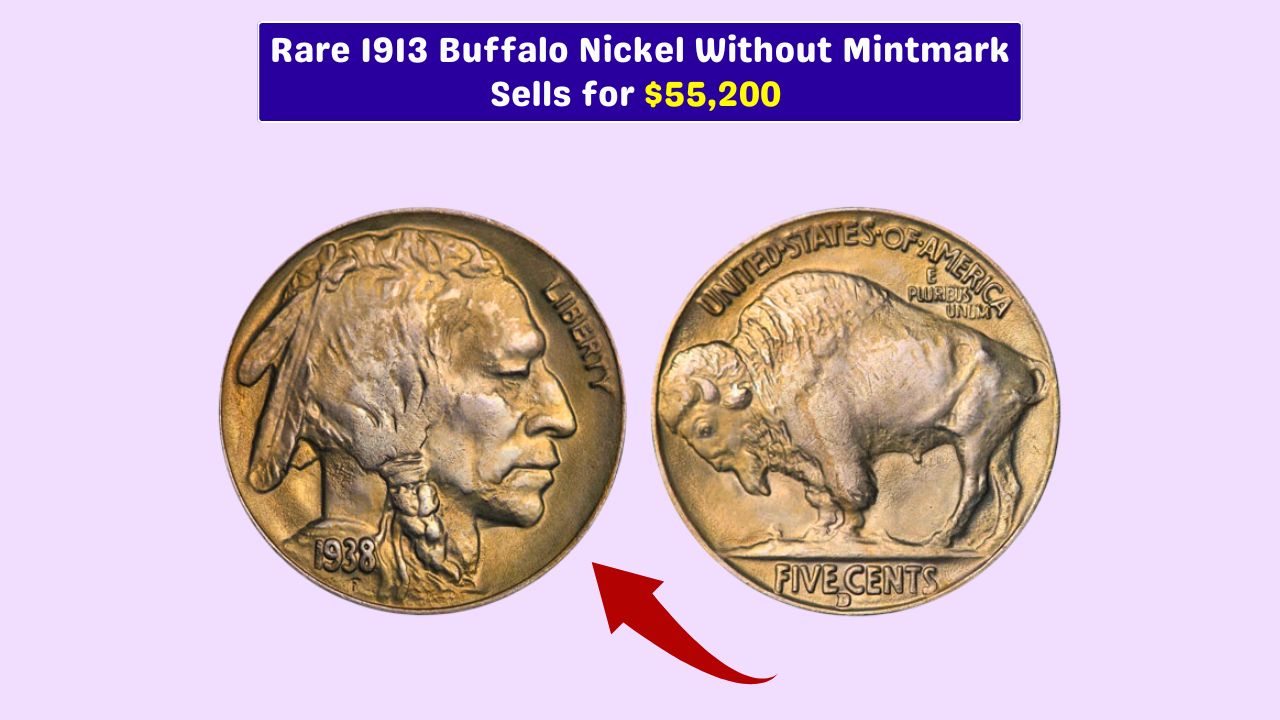The Buffalo Nickel, also known as the Indian Head Nickel, holds a firm place among America’s most iconic coins. First struck in 1913 and designed by James Earle Fraser, it quickly won the admiration of collectors for its bold imagery and cultural resonance.
Among the earliest issues, the 1913 Philadelphia-minted version (PCGS #3937) stands out—not for rarity, but for the impressive prices it has fetched at auction, including one that reached $55,200.
Details
This early Buffalo Nickel hails from the Philadelphia Mint, and unlike coins from Denver or San Francisco, it bears no mintmark. Over 32 million were produced during its initial run, making it far from scarce at the time.
Composed of 75% copper and 25% nickel, it weighs 5.00 grams and spans 21.20 mm in diameter, with a plain edge typical of circulating coinage in that era. Its durable composition helped it endure the rigors of daily use.
Design
Fraser’s design is often celebrated as one of the most artistically rich in American coinage. The obverse features a striking portrait of a Native American, which Fraser crafted by blending the features of several real-life chiefs. This thoughtful approach turned the image into a tribute, not a caricature.
On the reverse, a strong, weathered American bison stands atop a raised mound—this being the Type 1 design that was later adjusted within the same year.
That original, elevated ground was eventually flattened for better wear resistance, but collectors continue to favor the rugged appeal of the early Type 1 versions.
History
Buffalo Nickels were produced from 1913 to 1938, and PCGS #3937 specifically refers to the Type 1 issue from the Philadelphia Mint. Though the mintage was high—over 32 million—the coins saw extensive use in commerce. As a result, very few have survived in top-grade, uncirculated form.
Early examples that managed to escape circulation with their details intact are now prized. Most show their age through faded features, but the rare few that remain crisp and fully struck reveal the full artistry of Fraser’s vision.
Auction
Despite its common-date status, a superb example of the 1913 Buffalo Nickel sold for $55,200, a testament to the importance of condition in coin valuation. It’s not always about how many were made—it’s about how many survived in exceptional shape.
When a coin surfaces with strong detail, excellent surfaces, and sharp strike quality, collectors take notice.
Such sales have fueled renewed interest in early Buffalo Nickels, especially those from 1913, making them a popular target for both newcomers and seasoned hobbyists.
Legacy
The 1913 Type 1 Buffalo Nickel—especially the Philadelphia-minted PCGS #3937—represents a blend of American artistry, history, and collecting appeal. With a design that pays homage to Native American culture and the rugged wilderness, it tells a deeper story than its face value suggests.
While millions were minted, only a small number remain in outstanding condition, and those have continued to draw attention at major auctions.
For those drawn to history or numismatics, this coin serves as an ideal entry point—and perhaps, just maybe, a hidden gem worth far more than its humble denomination.
FAQs
What is PCGS #3937?
It’s the 1913 Type 1 Buffalo Nickel from Philadelphia.
Why is there no mintmark?
Philadelphia coins had no mintmark in 1913.
What is a Type 1 Buffalo Nickel?
It shows a buffalo on a raised mound.
What makes this coin valuable?
High-grade condition and original 1913 design.
Who designed the Buffalo Nickel?
James Earle Fraser, a noted American sculptor.






